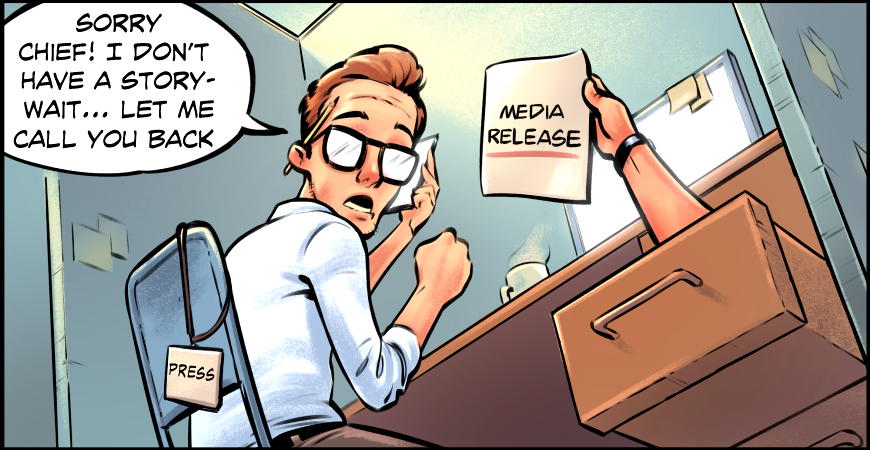The news cycle moves at breakneck pace in the digital age and successful media relations can often depend on when in the news cycle you comment on a story or issue.
How and when you approach media can determine how successful you will be in making sure your side of the story is told.
There are two types of media relations approaches: reactive and proactive. Reactive is when a story is already in the media and either a journalist contacts you and asks you to comment, or you approach the media to offer a comment.
Proactive is when your organisation decides it wants to raise an issue or tell a story that isn’t currently being reported on. There are many benefits to this type of engagement – whether to promote your brand, lead the debate, launch a service, or simply communicate with stakeholders.
So, what are the best ways to get your brand in the media and journalists interested in your story?
Develop a media strategy – being proactive generally means you have a lot more time up your sleeve for planning. It enables you to develop a strategy which could include your objectives, target media, timing and key messages.
Get your message in first – if you’re the one raising an issue, you have more ability to set the agenda, shape the debate and get your key messages across.
Provide an element of surprise – stories that are new, fresh, unique and topical are more likely to grab the media’s attention, and you can time the release of the story to have maximum impact.
Tell a positive story – proactive stories are stories that an organisation wants audiences to know – it’s your chance to get the media to cover your successes or prove your organisation is being innovative in your field.
Find the right person to be the ‘face’ of the issue – stories will generally get far more news coverage if they have a real person with a real story that illustrates the issue you are trying to raise. You should generally nominate someone authentic, rather than someone who appears ‘media trained’ however, you will need to ensure your case study has been properly briefed on how to handle media.
Offer an exclusive – if your organisation has full control over the release of the story, you could consider whether offering it as an exclusive to one journalist is likely to get the story more prominence.
These are just some of the ways that a proactive approach to media relations can be the difference between having your side of the story being represented or scrambling to address a situation spiralling out of control.
For assistance with implementing a proactive media relations approach, contact CGM Communications.
 ReGen Strategic
ReGen Strategic